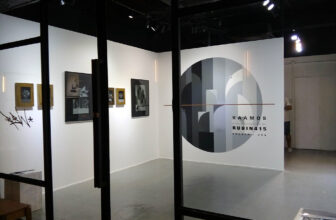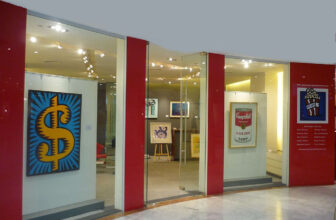
How Much Money Can You Make Investing in Art?
Investing in art has long been a pursuit of the wealthy and culturally inclined. However, with the growing democratization of art markets, more people are exploring this avenue as an alternative investment opportunity. Art investment is not only about aesthetic appreciation; it’s also about potential financial gains. But how much money can you really make by investing in art? Let’s dive into the intricacies of art investment, including its risks, rewards, and key considerations.
Understanding the Art Market
The art market is vast and multifaceted, comprising various categories such as contemporary art, old masters, impressionists, and modern art. The global art market is valued at around $65 billion annually, according to reports from organizations like Art Basel and UBS. It is characterized by auctions, private sales, and galleries.
The art market operates differently from traditional financial markets. Unlike stocks and bonds, art lacks a centralized marketplace and standardized pricing. Prices are influenced by factors such as the artist’s reputation, the rarity of the work, historical significance, and current market trends.
Historical Performance of Art as an Investment
Historically, art has demonstrated the ability to deliver substantial returns. The Mei Moses Art Index, a widely recognized benchmark for the art market, has shown that fine art can yield annualized returns of around 7% to 10% over the long term. However, these returns vary significantly depending on the type of art, the artist, and the timing of the investment.
For example, blue-chip artworks by renowned artists such as Pablo Picasso, Andy Warhol, and Claude Monet have consistently appreciated in value. In contrast, speculative art by emerging artists carries higher risks but also higher potential rewards if the artist gains recognition.
Factors Influencing Returns on Art Investments
1. Artist’s Reputation
The reputation and market demand for an artist play a significant role in determining the value of their work. Established artists with a strong track record are generally considered safer investments. However, these works often come with high price tags, requiring substantial capital.
2. Rarity and Provenance
Rarity increases the desirability of a piece. Unique works or those with a fascinating provenance, such as ownership by a famous individual, tend to fetch higher prices. Authenticity is crucial, and verified provenance can significantly enhance a piece’s value.
3. Market Trends
Art market trends are influenced by cultural shifts, economic conditions, and the preferences of high-net-worth collectors. Contemporary art, for instance, has seen a surge in popularity, with works by artists like Banksy and Jean-Michel Basquiat breaking auction records.
4. Condition and Medium
The condition and medium of an artwork also affect its value. Paintings, especially oil on canvas, generally command higher prices than prints or photographs. Proper preservation is essential to maintain or increase an artwork’s value over time.
5. Timing of the Investment
Timing is crucial in art investment. Buying during an artist’s early career or when the market is undervaluing a particular style can lead to significant gains. Conversely, buying at the peak of an artist’s market can result in lower returns.
Case Studies of Art Investment Success
1. Leonardo da Vinci’s “Salvator Mundi”
In 1958, Leonardo da Vinci’s “Salvator Mundi” was sold for just £45. Decades later, in 2017, it was auctioned for a staggering $450.3 million at Christie’s, making it the most expensive painting ever sold. While this is an extreme example, it highlights the potential for extraordinary returns in the art market.
2. Banksy’s “Girl with Balloon”
Banksy’s “Girl with Balloon,” partially shredded during a 2018 auction, was initially purchased for around $1.4 million. The stunt attracted global attention, and the renamed artwork, “Love is in the Bin,” was resold in 2021 for $25.4 million.
3. Jean-Michel Basquiat’s Untitled Works
Jean-Michel Basquiat’s untitled painting from 1982 sold for $19,000 in 1984. In 2017, the same piece was auctioned for $110.5 million. This demonstrates the exponential value growth that can occur when investing in works by influential artists.
Risks Associated with Art Investment
1. Illiquidity
Art is not a liquid asset. Selling a piece can take months or even years, and there’s no guarantee of finding a buyer willing to pay your asking price.
2. Market Volatility
The art market is subject to volatility, influenced by economic downturns, shifts in collector preferences, and geopolitical factors. During recessions, the art market often contracts as discretionary spending declines.
3. High Entry Costs
Investing in high-quality art requires significant upfront capital. Even emerging artists’ works can cost thousands of dollars. Additionally, buyers often face transaction fees, taxes, and insurance costs.
4. Lack of Regulation
The art market is largely unregulated, making it susceptible to fraud and forgery. Due diligence is essential to avoid purchasing inauthentic works.
5. Maintenance and Preservation
Artworks require proper care and storage to maintain their value. This can include climate-controlled environments, restoration, and regular appraisals, adding to the overall cost of investment.
How to Get Started with Art Investment
1. Educate Yourself
Understanding the art market is crucial. Attend gallery openings, art fairs, and auctions. Read books and follow art market reports to gain insights into trends and valuation metrics.
2. Set a Budget
Determine how much you’re willing to invest. Start small if you’re a beginner, focusing on works by emerging artists or limited-edition prints.
3. Leverage Online Platforms
Online art investment platforms like Masterworks and Saatchi Art allow investors to purchase shares in artworks or buy pieces directly. These platforms often provide research and valuation tools to assist investors.
4. Work with Experts
Consider working with art advisors, galleries, or auction houses. These professionals can provide valuable guidance on purchasing, valuation, and market trends.
5. Diversify Your Portfolio
Just as with any investment, diversification is key. Spread your investment across different artists, styles, and mediums to mitigate risks.
The Role of Fractional Art Investing
Fractional art investing has emerged as a popular option for those with limited capital. Platforms like Masterworks allow investors to buy shares in high-value artworks, enabling access to blue-chip art without the need for millions of dollars. While fractional ownership doesn’t provide physical possession, it allows investors to benefit from potential appreciation and liquidity events, such as sales.
Tax Implications of Art Investment
Art investments are subject to taxes, including capital gains tax when a piece is sold at a profit. In the U.S., art is considered a collectible, and long-term capital gains are taxed at a maximum rate of 28%. Consult a tax professional to understand the specific implications in your jurisdiction.
Potential Returns: What to Expect
The returns on art investments can vary widely:
- Blue-Chip Art: Historically, blue-chip art has delivered annualized returns of 8% to 10%.
- Emerging Artists: Investing in emerging artists can yield returns of 20% to 30%, but the risk of loss is higher.
- Art Funds: Art investment funds typically target annual returns of 6% to 15%, depending on the fund’s strategy and market conditions.
Investing in art can be both financially rewarding and personally fulfilling. While the potential for high returns exists, it’s essential to approach art investment with caution, conducting thorough research and seeking expert advice. The art market’s unique characteristics, such as its illiquidity, lack of standardization, and susceptibility to trends, require a different mindset than traditional investments.
For those willing to navigate the complexities, art can serve as a valuable addition to a diversified investment portfolio. Beyond the monetary gains, owning art provides an intangible reward: the joy of living with and appreciating beautiful, thought-provoking works. Whether you’re a seasoned collector or a newcomer, the world of art investment offers endless possibilities for growth, learning, and enrichment.





